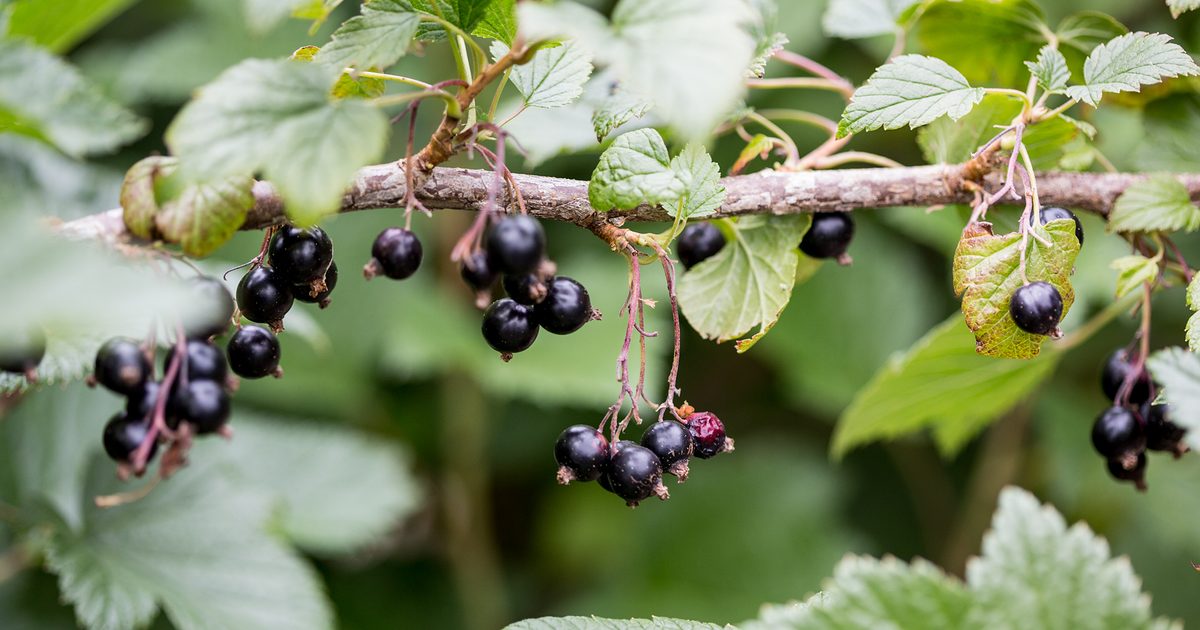Recommendations on the right way to develop blackcurrants
Develop blackcurrants in moist nonetheless well-drained soil in full photo voltaic to partial shade. Feed with a extreme potash fertiliser weekly all through the rising season and mulch the soil throughout the plant with well-rotted manure, leaf mould or compost. You possibly can ponder netting the fruit in opposition to birds. Prune in autumn.

Further on rising blackcurrants:
Recommendations on the right way to plant blackcurrants
Blackcurrants develop best in a sunny, sheltered spot the place fruits can ripen into fat, juicy berries. Plant bare-root blackcurrant bushes in autumn and pot grown crops at any time of the 12 months. If rising in a container choose a giant tub or barrel.
Blackcurrants thrive in deep soil, so dig a generous planting hole and add a great deal of well-rotted compost or manure and fertiliser to the soil. After planting, prune the bush correct once more.
Recommendations on the right way to handle blackcurrants
Blackcurrant bushes need a great deal of watering and feeding – considerably if container grown. In spring, feed with pelleted hen manure or completely different extreme potash fertiliser, and add a thick mulch. Preserve weed-free all through the rising season and when the fruits start to mature, net your crops to protect from the birds.
Prune blackcurrants in autumn and winter. Discover ways to prune blackcurrants efficiently, in our No Fuss video data:
Recommendations on the right way to propagate blackcurrants
Blackcurrants are easy to propagate from hardwood cuttings. Fid out how, in our No Fuss video data with David Hurrion:
Rising blackcurrants: downside fixing
New kinds of Blackcurrant bushes have good resistance to widespread points equal to mildew and frost hurt. Nonetheless, Blackcurrant gall midge may trigger leaves to dry and drop off. An insecticidal cleansing cleaning soap spray may assist to handle this. Take away any hurt leaves. Birds love the berries as loads as we do, so net your fruit bushes to protect them.
Uncover out why your blackcurrant could not flower or fruit, in our Quick Concepts video, with Emma Crawforth:
Recommendations on the right way to harvest blackcurrants
Blackcurrants are ready to decide on once they’re darkish and shiny, nonetheless nonetheless company. Select currants on a dry day, as moist currants will shortly go mouldy. Harvest full trusses, reasonably than specific individual berries. They’re usually eaten modern and might protect for numerous days after deciding on.
Consuming blackcurrants
Looking out for inspiration on strategies to make use of your crop? Our buddies at olive have curated a delicious assortment of blackcurrant recipes, along with their ingenious blackcurrant ripple ice cream.
Storing blackcurrants
You might retailer unwashed bunches of currants throughout the fridge for as a lot as 5 days If in case you could have further fruit than you must use immediately, the berries freeze correctly and could possibly be preserved in jams, sauces and cordials.
Blackcurrant varieties to aim
- Blackcurrant ‘Ebony’ – an excellent, disease-resistant choice, producing very sweet, big fruits from early to mid-July. Vegetation have a barely open, spreading habits for easy deciding on.
- Blackcurrant ‘Ben Connan’ – a small bush variety of blackcurrant, with a great deal of big, shiny black fruits ready to select from early July. This choice has superb mildew resistance and good tolerance to frost.
- Blackcurrant ‘Baldwin’ – an older choice, used throughout the blackcurrant commerce for a couple of years, this has a delicate flavour, nonetheless it is inclined mildew and frosts.
- Blackcurrant ‘Ben Sarek’ – a compact choice with a great deal of big, juicy fruits in July. Good resistance to mildew, frost and leaf-curling midge
- Blackcurrant ‘Ben Hope’ – a late-maturing choice with good resistance to mildew.
- Blackcurrant ‘Ben Nevis’ – proof against frost and mildew, the fruits are ready to decide on in late July.